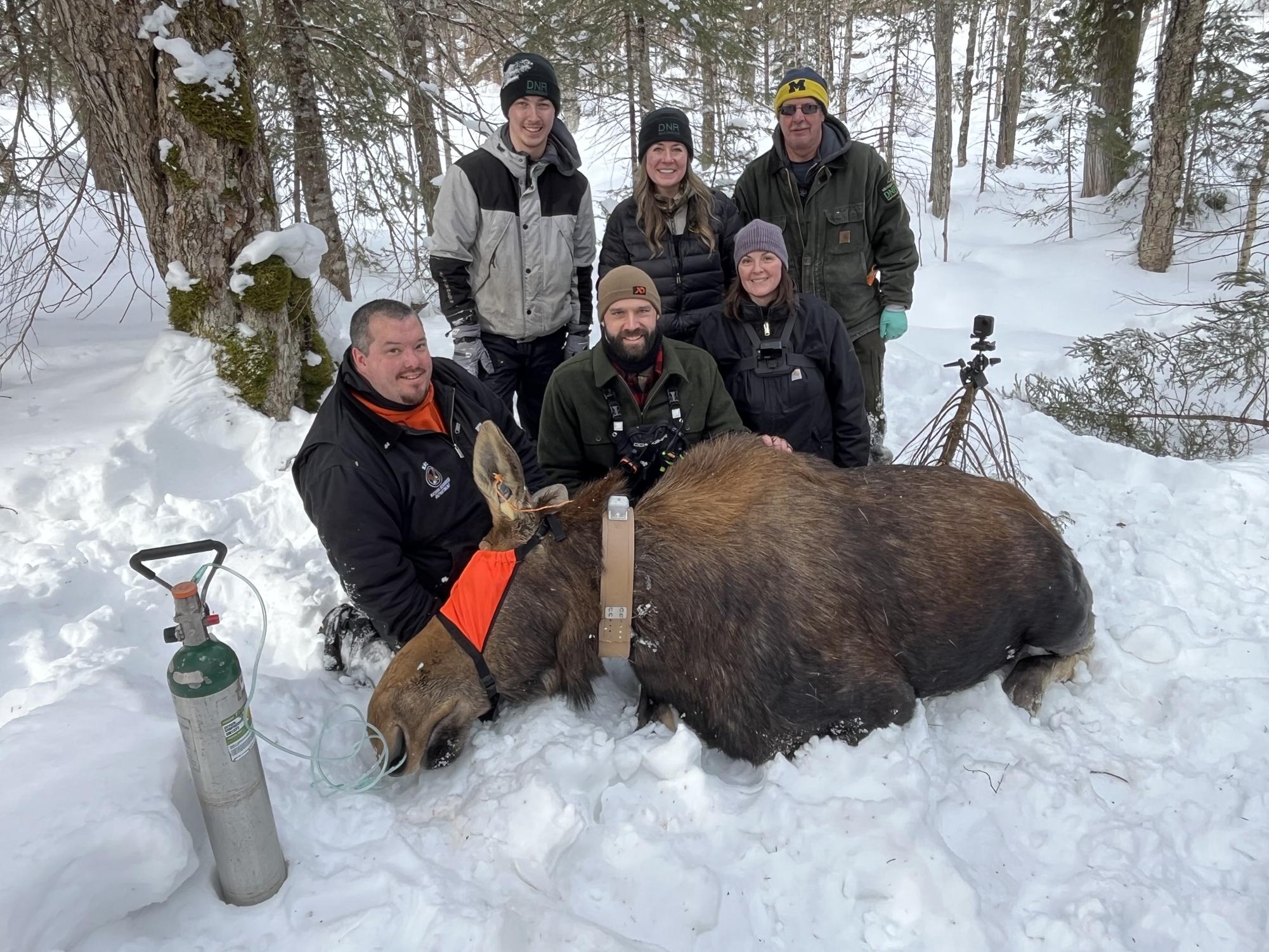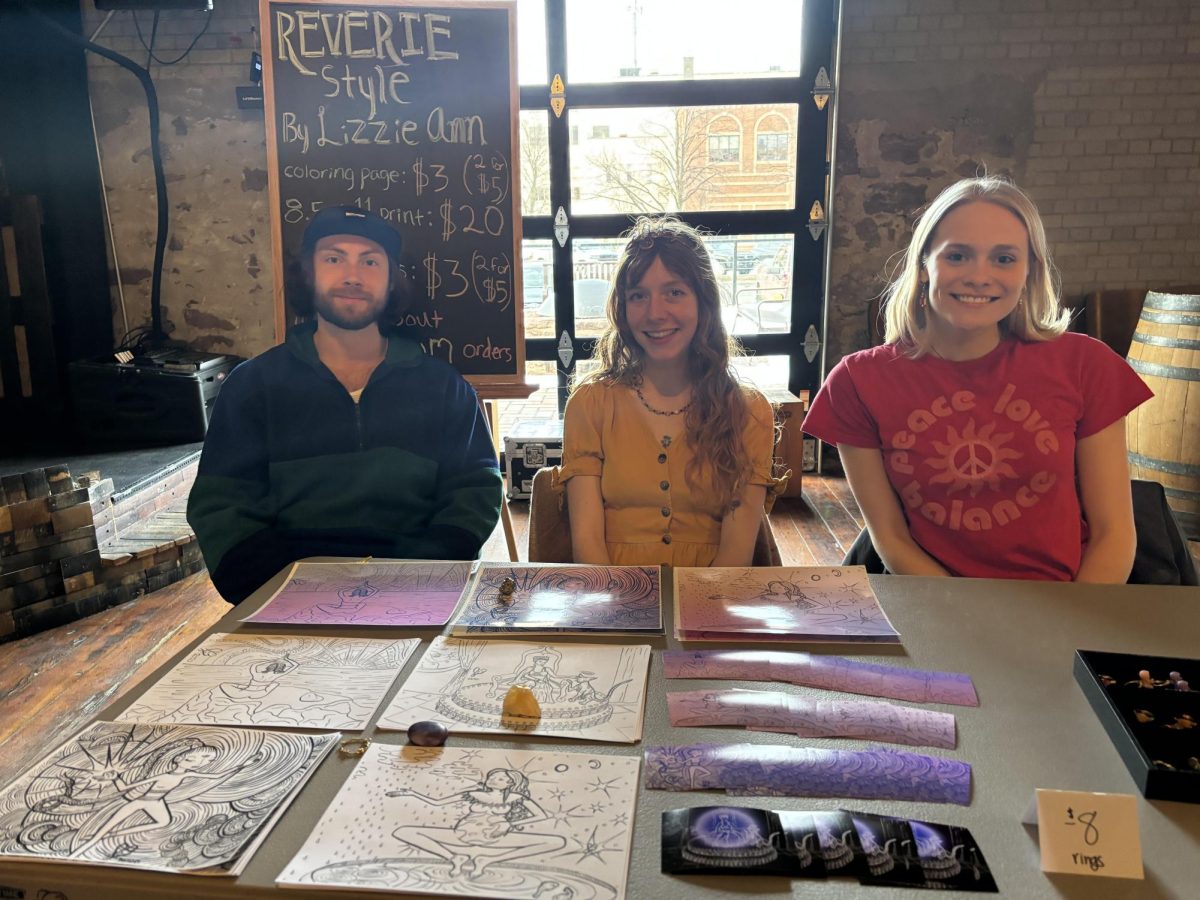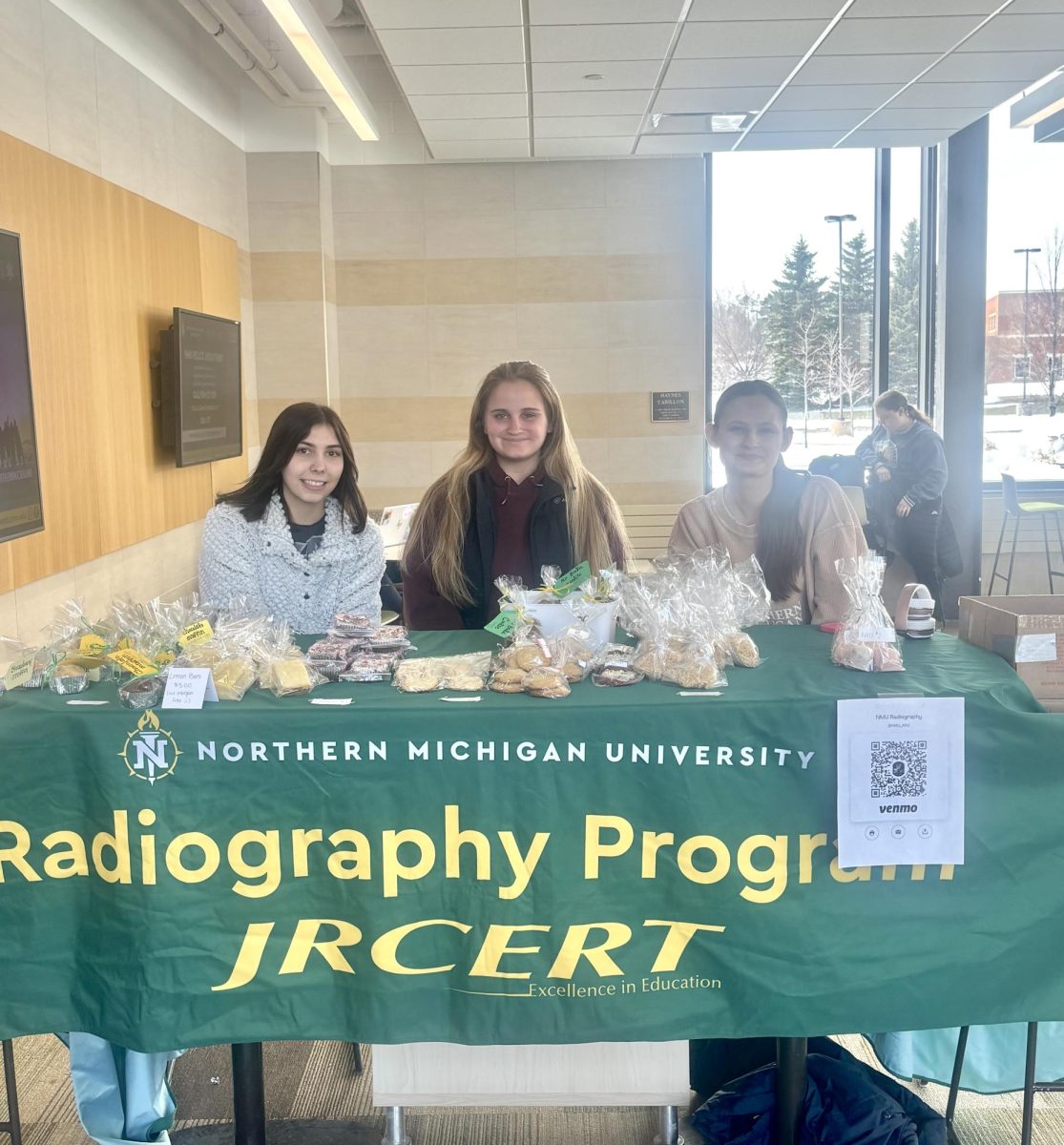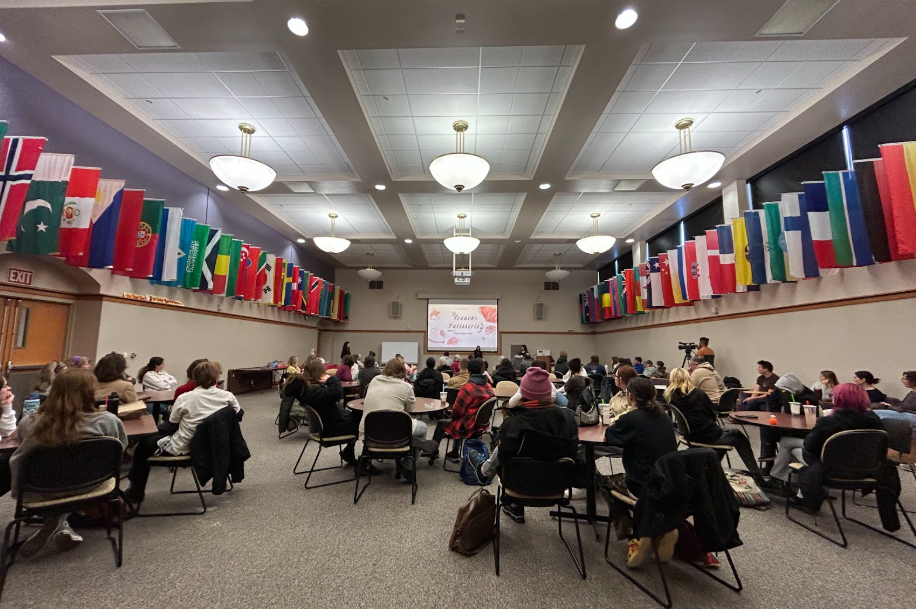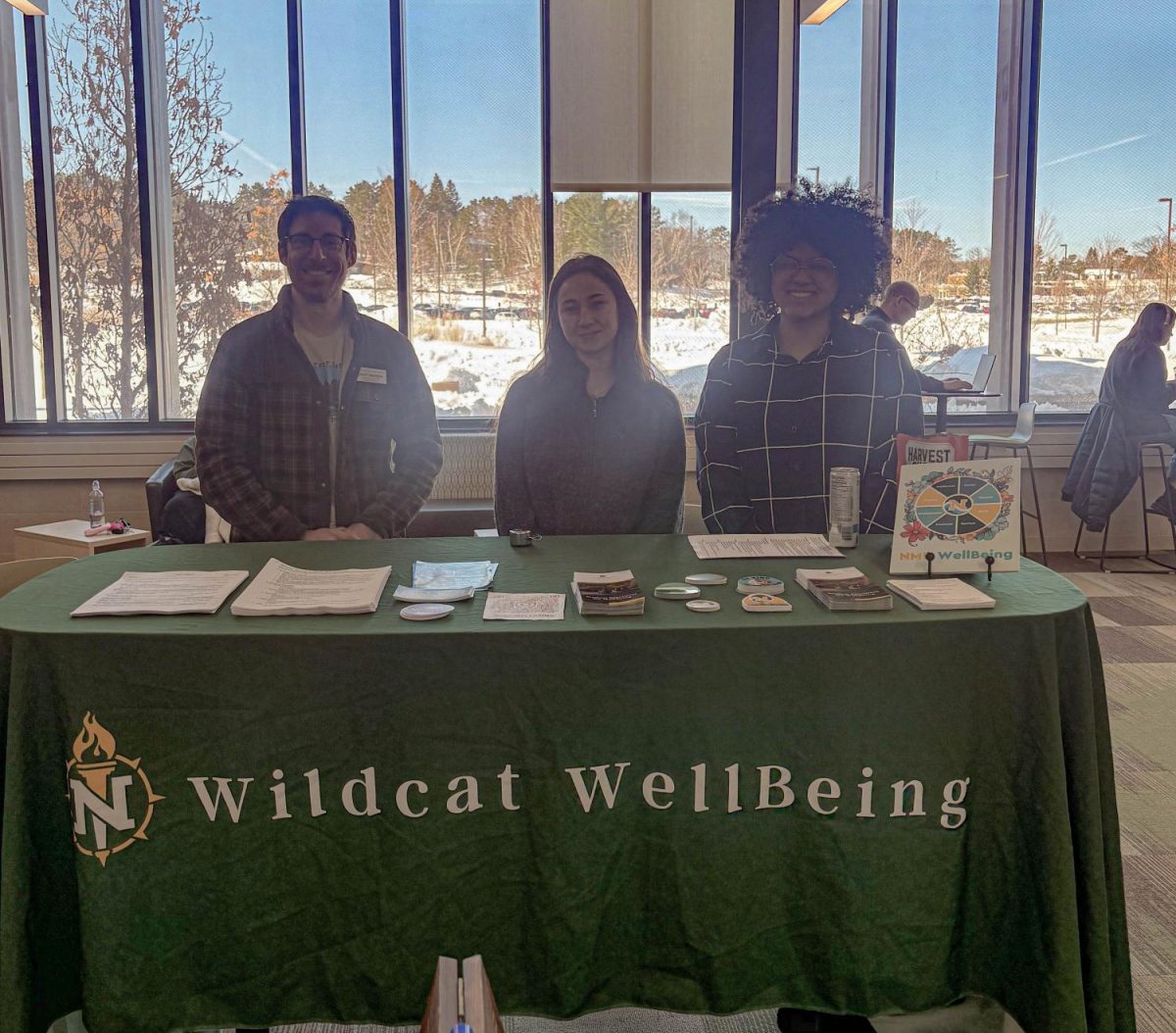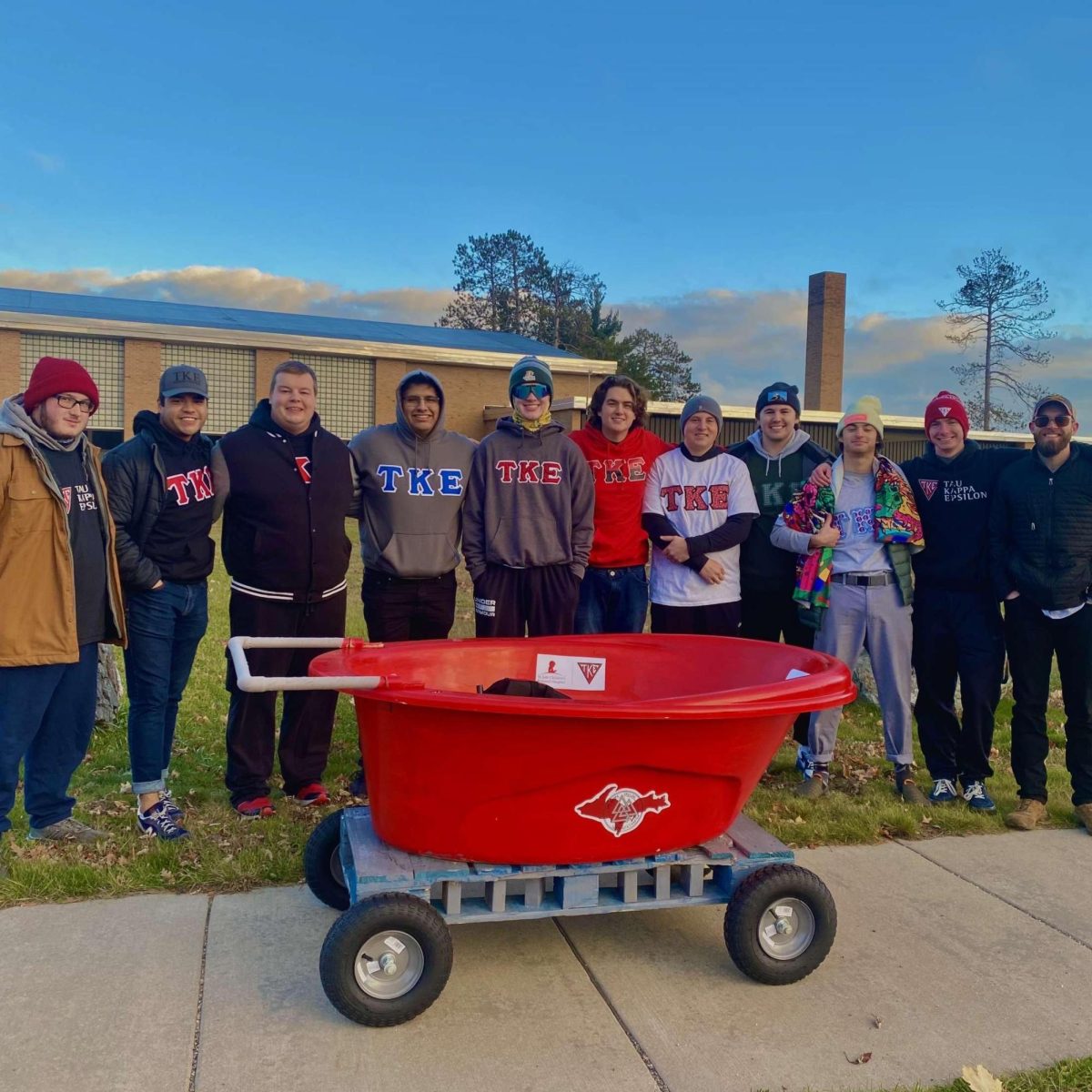In the heart of the woods in the Upper Peninsula where the tall pines meet the snow, a devoted Wildcat took to the sleds and the skies to study one of the most iconic northern animals: the moose. Louis Good, a wildlife research assistant, ventured into the wilderness via snowmobile to monitor the moose of the North Woods.
Good’s passion for the outdoors and wildlife conservation began at a young age as a part of his Boy Scout troop in the lower pinsula where he grew up. His love for the outdoors and commitment to conservation brought him to where he is today.
Good graduated from Northern Michigan University in May 2024 with a degree in Fisheries and Wildlife Studies. He is now back on campus as a student wildlife research assistant for the Michigan Department of Natural Resources (DNR) and has just returned from a research opportunity of a lifetime.
This story began within the walls of the science building and Northern’s biology department. During his time as an undergraduate student, Good spent a significant portion of his time forming meaningful connections with professors and dedicating his efforts to volunteering in the field of wildlife conservation.
“I think that the most rewarding part of this process is seeing how my time at Northern, especially my volunteer opportunities, sparked my involvement in this,” Good said. “I know that my time at Northern and what I did and who I got connected with, who I was involved with none of this would have happened without it, so I am really grateful for that.”
Each opportunity led to the next as his interests grew. He made the decision to apply for the research assistant position, which was the final step that opened the door to the once-in-a-lifetime moose study.
Some of the overarching goals of the study were to focus on human safety and to capture and collar 20 moose. There were two ground crews, each with about five to six people. Good was a part of one of the ground crews ready to work with the second set of eyes in the skies. Once the aerial team spotted a moose, they had the opportunity to move in and collar the animal.
The collar serves as a way to track both the physical migration and the population growth or decline. By tracking a small population of moose, researchers can gain an understanding of the current moose population, including reasons for their movement and other behavioral patterns.
“I did a lot of the organization and got the equipment ready … pretty much all of the gear was my responsibility for almost 40 staff members who worked on the project,” Good said.
No efforts went unseen or unfelt throughout this process, as the team truly worked as a unit to reach their collective goal. The organization of the study took a few months to complete, but in the end, the team reached their goal of collaring 20 moose.
The study will continue in the spring to check in and analyze the movement and wellbeing of the tagged moose. Depending on funding and involvement, the study will hopefully grow to include up to 40 moose during the next expedition.
The best way to get involved is by simply putting yourself out there. There are many DNR-related opportunities and experiences that are unique to the Upper Peninsula and Northern’s location.
“Volunteer a lot, connect with your professors and try to get a good internship in the summer, whether it’s paid or unpaid … school is not just about your studies. It’s also about what you do outside of school, whether that be working or volunteering,” Good said.
As Good’s work with the moose study continues to unfold, his dedication to conservation of all parts of the U.P. wilderness have not gone unnoticed. His passion for wildlife will leave a lasting impact on both the animals and the students and staff he had the opportunity to work with. This study is a top-notch example of the efforts needed to keep our wildlife in good standing.


